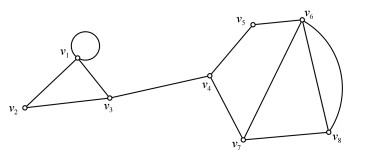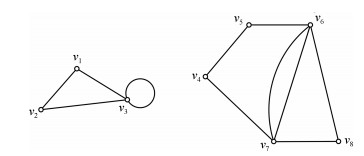|
[1]
|
陈世明, 管俊杰, 高彦丽, 裴惠琴, 邱昀.组合连通拓扑下基于事件触发的多智能体快速一致性算法.自动化学报, 2018, 44(12): 2269-2277 doi: 10.16383/j.aas.2018.c160839Chen Shi-Ming, Guan Jun-Jie, Gao Yan-Li, Pei Hui-Qin, Qiu Yun. Event-triggered fast consensus algorithm for multi-agent systems under jointly-connected topology. Acta Automatica Sinica, 2018, 44(12): 2269-2277 doi: 10.16383/j.aas.2018.c160839
|
|
[2]
|
杨东岳, 梅杰.有向图中基于扰动观测器的线性多智能体系统一致性.自动化学报, 2018, 44(6): 1037-1044 doi: 10.16383/j.aas.2017.c160747Yang Dong-Yue, Mei Jie. Disturbance observer based consensus of linear multi-agent systems under a directed graph. Acta Automatica Sinica, 2018, 44(6): 1037-1044 doi: 10.16383/j.aas.2017.c160747
|
|
[3]
|
严卫生, 李俊兵, 王银涛.受损多智能体系统的信息一致性.自动化学报, 2012, 38(11): 1880-1884 doi: 10.3724/SP.J.1004.2012.01880Yan Wei-Sheng, Li Jun-Bing, Wang Yin-Tao. Consensus for damaged multi-agent system. Acta Automatica Sinica, 2012, 38(11): 1880-1884 doi: 10.3724/SP.J.1004.2012.01880
|
|
[4]
|
罗小元, 杨帆, 李绍宝, 关新平.多智能体系统的最优持久编队生成策略.自动化学报, 2014, 40(7): 1311-1319 doi: 10.3724/SP.J.1004.2014.01311Luo Xiao-Yuan, Yang Fan, Li Shao-Bao, Guan Xin-Ping. Generation of optimally persistent formation for multi-agent systems. Acta Automatica Sinica, 2014, 40(7): 1311-1319 doi: 10.3724/SP.J.1004.2014.01311
|
|
[5]
|
闵海波, 刘源, 王仕成, 孙富春.多个体协调控制问题综述.自动化学报, 2012, 38(10): 1557-1570 doi: 10.3724/SP.J.1004.2012.01557Min Hai-Bo, Liu Yuan, Wang Shi-Cheng, Sun Fu-Chun. An overview on coordination control problem of multi-agent system. Acta Automatica Sinica, 2012, 38(10): 1557-1570 doi: 10.3724/SP.J.1004.2012.01557
|
|
[6]
|
曹然, 梅杰.有向图中网络Euler-Lagrange系统无需相对速度信息的群一致性.自动化学报, 2018, 44(1): 44-51 doi: 10.16383/j.aas.2018.c160637Cao Ran, Mei Jie. Group consensus for networked Euler-Lagrangian systems under a directed graph without relative velocity information. Acta Automatica Sinica, 2018, 44(1): 44-51 doi: 10.16383/j.aas.2018.c160637
|
|
[7]
|
Huang C, Zhai G S, Xu G S. Necessary and sufficient conditions for consensus in third order multi-agent systems. IEEE/CAA Journal of Automatica Sinica, 2018, 5(6): 1044-1053 doi: 10.1109/JAS.2018.7511222
|
|
[8]
|
罗小元, 邵士凯, 关新平, 赵渊洁.多智能体最优持久编队动态生成与控制.自动化学报, 2013, 39(9): 1431-1438 doi: 10.3724/SP.J.1004.2013.01431Luo Xiao-Yuan, Shao Shi-Kai, Guan Xin-Ping, Zhao Yuan-Jie. Dynamic generation and control of optimally persistent formation for multi-agent systems. Acta Automatica Sinica, 2013, 39(9): 1431-1438 doi: 10.3724/SP.J.1004.2013.01431
|
|
[9]
|
Wang Q, Wang Y Z, Zhang H X. The formation control of multi-agent systems on a circle. IEEE/CAA Journal of Automatica Sinica, 2018, 5(1): 148-154 doi: 10.1109/JAS.2016.7510022
|
|
[10]
|
Maithripala D H A, Jayasuriya S. Rigid formation keeping and formation reconfiguration of multi-agent systems. IFAC Proceedings Volumes, 2008, 41(2): 5155-5160 doi: 10.3182/20080706-5-KR-1001.00866
|
|
[11]
|
游科友, 谢立华.网络控制系统的最新研究综述.自动化学报, 2013, 39(2): 101-118 doi: 10.3724/SP.J.1004.2013.00101You Ke-You, Xie Li-Hua. Survey of recent progress in networked control systems. Acta Automatica Sinica, 2013, 39(2): 101-118 doi: 10.3724/SP.J.1004.2013.00101
|
|
[12]
|
Huo Zhi-Hong, Fang Hua-Jing. Fault-tolerant control research for networked control system under communication constraints. Acta Automatica Sinica, 2006, 32(5): 659-666 http://www.wanfangdata.com.cn/details/detail.do?_type=perio&id=zdhxb200605002
|
|
[13]
|
Chung F. Graph theory in the information age. Notices of the American Mathematical Society, 2009, 57(6): 726-732 http://www.wanfangdata.com.cn/details/detail.do?_type=perio&id=fc9314476dedf26ba1ab76fb0fdc2c7f
|
|
[14]
|
Zhang S H, Yan Y H, Bao W, Guo S W, Jiang J D, Ma M R. Network topology identification algorithm based on adjacency matrix. In: Proceedings of the 2017 IEEE Innovative Smart Grid Technologies. Auckland: IEEE, 2017. 1-5
|
|
[15]
|
Ghosh R K. Parallel algorithms for connectivity problems in graph theory. International Journal of Computer Mathematics, 1986, 18(3-4): 193-218 doi: 10.1080/00207168608803490
|
|
[16]
|
Wagenpfeil J, Trachte A, Hatanaka T, Fujita M, Sawodny O. A distributed minimum restrictive connectivity maintenance algorithm. IFAC Proceedings Volumes, 2009, 42(16): 365-370 doi: 10.3182/20090909-4-JP-2010.00063
|
|
[17]
|
Pisano A, Franceschelli M, Pilloni A, Shtessel Y, Usai E. Retaining connectivity in mobile communication mesh networks. IFAC-PapersOnLine, 2017, 50(1): 800-807 doi: 10.1016/j.ifacol.2017.08.143
|
|
[18]
|
Nagamochi H. Graph algorithms for network connectivity problems. Journal of the Operations Research Society of Japan, 2004, 47(4): 199-223 http://www.ams.org/mathscinet-getitem?mr=2174063
|
|
[19]
|
McNunn G S, Bryden K M. A proposed implementation of Tarjan's algorithm for scheduling the solution sequence of systems of federated models. Procedia Computer Science, 2013, 20: 223-228 doi: 10.1016/j.procs.2013.09.265
|
|
[20]
|
Hwang F. Control algorithms for rearrangeable clos networks. IEEE Transactions on Communications, 1983, 31(8): 952-954 doi: 10.1109/TCOM.1983.1095923
|
|
[21]
|
Kenneth H R. Discrete Mathematics and Its applications. 7th Edition. 1221 Avenue of the Americas, NewYork, NY: McGraw-Hill, 2012. 603-606
|





 下载:
下载:



